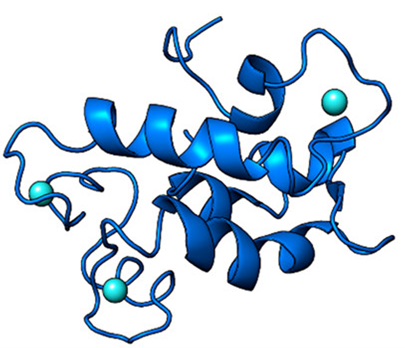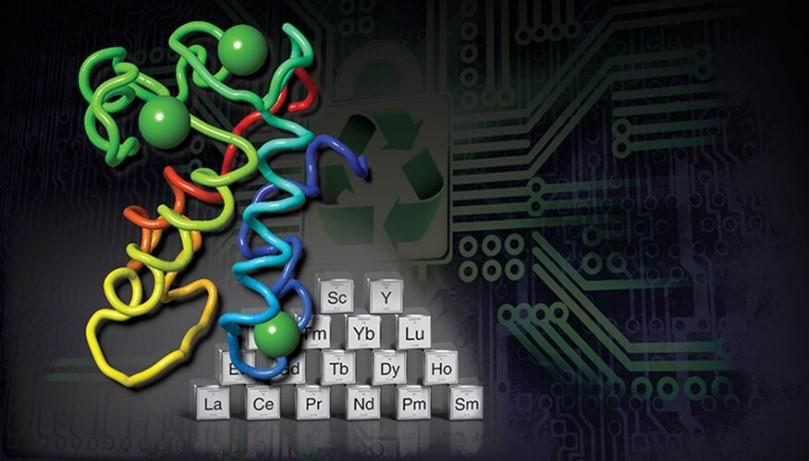Select Rare Earth Elements (REEs) have proven to be extremely important in high value magnet formulations and in electronic systems components. However, REEs are expensive to mine because of high labor and environmental costs. Additionally, recycling these elements is an important aspect of sustainability and cost structure. Therefore, there’s a need for separation methods that can be used to target and isolate specific high value REEs. One promising method is using biomacromolecules that are designed to bind or chelate to specific elements of interest; the bound element can then be separated from other material.
LLNL researchers along with collaborators at Pennsylvania State University have found that a newly discovered natural protein named Lanmodulin (LanM) could be a potential candidate for extracting REEs from ore or other sources such as coal ash as well as purifying the REE material. Through joint research, the scientists found that LanM undergoes a large conformational change in response to REEs and can be used to recover >99.5% lanthanides and >96% Sc and Y with negligible non-REE impurities in a single step, even from sources containing just 30 ppm REEs. LanM is significantly more selective (1000X) and robust compared to any known REE-binding macromolecules (e.g. proteins, synthetic peptides). The method using LanM works across the lanthanide series and LanM appears to have very good selectivity and works well under varied conditions of temperature, pH and concentrations of impurities. LanM has the potential to bring a new paradigm for extractive metallurgy and other applications.
Publications:
Gauthier J.-P. Deblonde, Joseph A. Mattocks, Dan M. Park, David W. Reed, Joseph A. Cotruvo Jr., and Yongqin Jiao “Selective and Efficient Biomacromolecular Extraction of Rare-Earth Elements using Lanmodulin” Inorganic Chemistry 2020 59 (17), 11855-11867 (https://doi.org/10.1021/acs.inorgchem.0c01303)
- Efficient and highly selective for extracting a specific REE, outperforming many synthetic REE chelators.
- Stable under acidic environments (pH 3) and high temperature (up to 95 deg C).
- Reduces the cost of REE mining, recovery and refining processes.
- Efficient extraction of rare earth elements (REEs) from complex mixtures such as those found in e-waste, REE-containing coal, mine tailings or geothermal brines.
- Purification of REEs (lanthanides + scandium + yttrium).
- Pharmaceutical applications using REE-based drugs such as MRI contrast agents, radiotherapies (alpha and beta therapies), medical imaging (PET scans), heavy metal detoxification (chelation therapies).
- Extraction of REEs for analytical purposes.
- Could be applied to actinide elements (e.g. actinium, americium, curium) in addition to REEs.
Current stage of technology development: TRL 2
US Patent Application No. 2021/0268132 METHODS OF SEQUESTERING TARGET ELEMENTS published 9/2/2021



